您好,登錄后才能下訂單哦!
您好,登錄后才能下訂單哦!
這篇文章主要介紹“怎么用github寫個口紅色號識別器”,在日常操作中,相信很多人在怎么用github寫個口紅色號識別器問題上存在疑惑,小編查閱了各式資料,整理出簡單好用的操作方法,希望對大家解答”怎么用github寫個口紅色號識別器”的疑惑有所幫助!接下來,請跟著小編一起來學習吧!
來自 Github 的口紅色號宇宙
要想識別口紅色號,先得讓機器知道到底都有哪些顏色。
聽柜姐介紹,紅色系有:“草莓紅、鐵銹紅、楓葉紅...”,其他還有“豆沙色、吃土色、番茄色...”
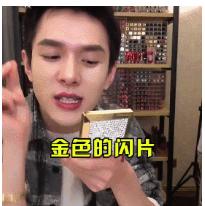
世界觀還未建立完全就要開始土崩瓦解,這看著有區別嗎?“豆沙色最為百搭,橘調的番茄色比較顯白...”眼前的黑不是黑,你說的紅是什么紅?
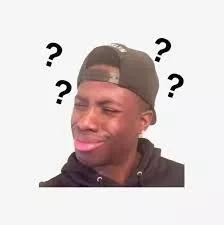
還好,在萬能的 Github 上找到了一個寶藏數據庫“口紅顏色可視化”,這個數據庫堪比口紅的色號宇宙,不僅囊括了當前最主流品牌的各種系列色號,還很良心的在色盤上排列了出來。
這個數據集是一個嵌套的字典數據結構,存為 json 串的形式,里面記錄了每個口紅品牌系列下不同口紅色號的顏色 id、名稱、和 16 進制顏色值。
直!男!救!星!有木有!
口紅色號可視化鏈接:
https://github.com/Ovilia/lipstick
不過看著這密密麻麻的顏色,真心佩服各大口紅品牌的文案高手,是怎么樣區別每一個看不出區別的顏色,并且還要分別取名字的。
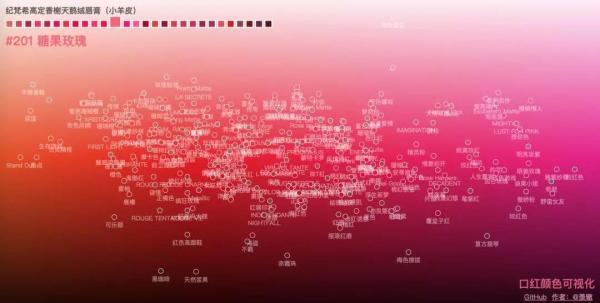
傻傻分不清的我對 5 個品牌的不同系列做了一下統計和色號錄入,于是,剩下的就交給計算機啦。
先用番茄做個實驗?
既然有了如此完備的色號數據庫,那么文摘菌就有了一個討巧的方法:要想找到合適的色號,可以直接截取顏色,然后在數據庫中進行比對。
這個方法非常好操作,在上唇色之前,我們不如先拿別的紅色物品來練手。
比如,這里有一只番茄圖片,你看這個番茄它又大又圓:
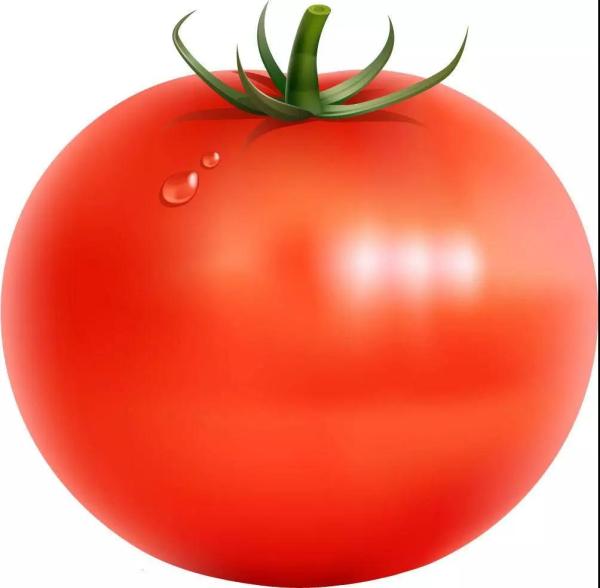
在其中截取了成色均勻、無高亮的矩形圖片:
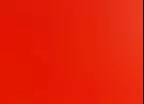
提取這張純色圖片的 RGB 值在技術上是可行的,getcolor.py 代碼如下:
import colorsys import PIL.Image as Image def get_dominant_color(image): max_score = 0.0001 dominant_color = None for count,(r,g,b) in image.getcolors(image.size[0]*image.size[1]): # 轉為HSV標準 saturation = colorsys.rgb_to_hsv(r/255.0, g/255.0, b/255.0)[1] y = min(abs(r*2104+g*4130+b*802+4096+131072)>>13,235) y = (y-16.0)/(235-16) #忽略高亮色 if y > 0.9: continue score = (saturation+0.1)*count if score > max_score: max_score = score dominant_color = (r,g,b) return dominant_color
為了減少誤差,需要裁剪多個不同位置的圖片,保存在本地的一個文件夾中,讀取文件,提取顏色,求平均值,得到的番茄最終的 RGB 顏色,代碼如下:
import os import getcolor from os.path import join as pjoin from scipy import misc def load_color(color_dir,list): count = 0 for dir in os.listdir(color_dir): img_dir = pjoin(color_dir, dir) image = getcolor.Image.open(img_dir) image = image.convert('RGB') get=getcolor.get_dominant_color(image) list.append(get) count = count+1 #print(person_dir) #print(count) return count def Mean_color(count,list): Mean_R=Mean_G=Mean_B=0 for i in range(count): tuple=list[i] Mean_R+=tuple[0] Mean_G+=tuple[1] Mean_B+=tuple[2] MeanC=((int)(Mean_R/count),(int)(Mean_G/count),(int)(Mean_B/count)) return Me番茄的顏色提取到了,那么和什么做比對呢?
當然是口紅的數據,文摘菌這兒用到了 5 個品牌,分別是圣羅蘭、香奈兒可可小姐、迪奧、美寶蓮、紀梵希,共 17 個系列,271 個口紅色號。
數據集是一個嵌套的字典數據結構,存為 json 串的形式,里面記錄了每個口紅品牌系列下不同口紅色號的顏色 id、名稱、和 16 進制顏色值。
lipstick.json部分數據集展示如下:
{"brands":[{"name":"圣羅蘭","series": [{"name":"瑩亮純魅唇膏","lipsticks": [{"color":"#D62352","id":"49","name":"撩騷"}, {"color":"#DC4B41","id":"14","name":"一見傾心"}, {"color":"#B22146","id":"05","name":"浮生若夢"},數據集中存儲的 RGB 顏色是 16 進制的字符串形式,需要將其轉換成 RGB 值,比較兩個顏色相近與否。
實際上是比較 RGB 三個分量維度上的誤差,最小的口紅輸出對應的品牌、系列、色號和 id。
代碼如下:
import json import getcolor import numpy as np import lipcolor #filename = 'temp.txt' ##write the temp data to file## def WtoFile(filename,RGB_temp): num=len(RGB_temp) with open(filename,'w') as f: for i in range(num): s = str(RGB_temp[i]).replace('[','').replace(']','') f.write(s) f.write("\n") #operate the data # ##save the brand&series&color id&color name to sum_list## ##covert the color #D62352 to RGB_array## ##caculate the RGB difference to RGB_temp and write the value to file## def data_operate(): with open('lipstick.json', 'r', encoding='utf-8') as f: ret_dic = json.load(f) #print(ret_dic['brands']) #print(type(ret_dic)) # <class 'dict'> #print(ret_dic['brands'][0]['name']) b_num=len(ret_dic['brands']) #print(b_num)#brands number s_list=[] #series brands# for i in range(len(ret_dic['brands'])): s_num=len(ret_dic['brands'][i]['series']) s_list.append(s_num) #print("{0} has {1} series".format((ret_dic['brands'][i]['name']),(s_list[i]))) #the lipstick color of every brands every series# #the first loop calculate the total color numbers sum=0 for b1 in range(b_num): for s1 in range(s_list[b1]): brand_name=ret_dic['brands'][b1]['name'] lip_name=ret_dic['brands'][b1]['series'][s1]['name'] color_num=len(ret_dic['brands'][b1]['series'][s1]['lipsticks']) sum+=color_num#calculate the total color numbers #the second loop save the message to a list# sum_list=np.zeros((sum,4), dtype=(str,8)) value_array=np.zeros((sum,6), dtype=int) i=0 for b2 in range(b_num): for s2 in range(s_list[b2]): brand_name=ret_dic['brands'][b2]['name'] #print(type(brand_name)) lip_name=ret_dic['brands'][b2]['series'][s2]['name'] color_num=len(ret_dic['brands'][b2]['series'][s2]['lipsticks']) for c in range(color_num): color_value=ret_dic['brands'][b2]['series'][s2]['lipsticks'][c]['color'] color_name=ret_dic['brands'][b2]['series'][s2]['lipsticks'][c]['name'] color_id=ret_dic['brands'][b2]['series'][s2]['lipsticks'][c]['id'] #print("{0} series {1} has {2} colors,color {3}:{4}".format(brand_name,lip_name,color_num,c+1,color_name)) sum_list[i][0]=brand_name sum_list[i][1]=lip_name sum_list[i][2]=color_id sum_list[i][3]=color_name #value_array[i]=value_array[i][1] #convert "#D62352" to [13 6 2 3 5 2]# for l in range(6): temp=color_value[l+1] if(temp>='A'and temp<='F'): temp1=ord(temp)-ord('A')+10 else: temp1=ord(temp)-ord('0') value_array[i][l]=temp1 i+=1 #the third loop covert value_array to RGB_array# RGB_array=np.zeros((sum,3), dtype=int) for i in range(sum): RGB_array[i][0]=value_array[i][0]*16+value_array[i][1] RGB_array[i][1]=value_array[i][2]*16+value_array[i][3] RGB_array[i][2]=value_array[i][4]*16+value_array[i][5] #calculate the similar and save to RGB_temp #RGB_temp=np.zeros((sum,1), dtype=int) RGB_temp=np.zeros((sum,1), dtype=float) for i in range(sum): R=RGB_array[i][0] G=RGB_array[i][1] B=RGB_array[i][2] RGB_temp[i]=abs(get[0]-R)+abs(get[1]*3/4-G)+abs(get[2]-B) RGB_temp.tolist();#covert array to list #print(RGB_temp) filename="temp.txt" WtoFile(filename,RGB_temp) #sort the RGB_temp# result=sorted(range(len(RGB_temp)), key=lambda k: RGB_temp[k]) #print(result) #output the three max prob of the lipsticks# print("The first three possible lipstick brand and color id&name are as follows:") for i in range(3): idex=result[i] print(sum_list[idex]) print("The first three possible lipstick brand RGB value are as follows:") for i in range(3): idex=result[i] R=RGB_array[idex][0] G=RGB_array[idex][1] B=RGB_array[idex][2] tuple=(R,G,B) print(tuple) if __name__ == '__main__': #image = getcolor.Image.open(inputpath) #image = image.convert('RGB') #get=getcolor.get_dominant_color(image)#tuple #get=(231, 213, 211) list=[] color_dir="output" count=lipcolor.load_color(color_dir,list) get=lipcolor.Mean_color(count,list) print("the extracted RGB value of the color is {0}".format(get)) #operate the data# data_operat輸出最有可能吻合番茄顏色的前三個口紅的信息,然后在 Spyder 中的運行結果:

可以看到最有可能的三個口紅品牌色號的 RGB 值與番茄的 RGB 值是非常接近的。
提取到的番茄顏色:

'迪奧' '烈艷藍金唇膏' '080' '微笑正紅’的顏色:

'圣羅蘭' '純口紅' '56' '橙紅織錦'的顏色:

'紀梵希' '高定香榭天鵝絨唇' '325' '圣水紅'的顏色:

我已經眼花繚亂,三個顏色……有區別嗎?!以后不如準備統一叫它們,番茄色!

不過,這也正說明了,剛剛的提取&對比方法可行!
既然可以識別番茄的顏色,那么,可以識別人像中的口紅色號嗎?
進入正題!人像口紅色號識別
接下來,我們需要做的是輸入一張人像圖片,可以自動識別其中的嘴唇區域,并提取出嘴唇區域中的一部分做為顏色提取的源圖像。
這里就要用到 CV 的人臉識別了,還好 Dlib 庫又幫助我們減輕一大部分的工作量。
Dlib 中有自帶的 68 個人臉的識別器,可以得到人臉部位包括眉毛、眼睛、鼻梁、面部輪廓和嘴唇區域的具體點的位置,到這兒,我以為很輕松就可以截到嘴唇區域了,結果有點尷尬.........
我們首先找到了一張小姐姐的照片:

截取到的嘴唇區域如下:

很明顯的看到上下嘴唇黑色的區域也截取到了,這對后續的提色有影響,所以不得不回到最初的 68 個檢測點來思考人生。
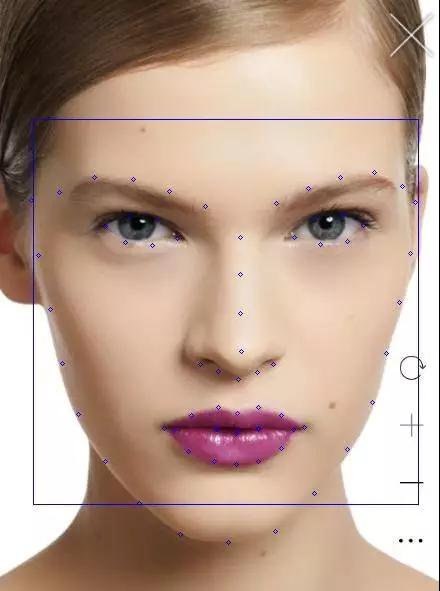
圣羅蘭官網 #842C71 口紅
標記的 68 個人臉檢測點如上圖所示,而嘴唇部位是從第 49 個標記點開始的(數組的話,下標是 48)。
為了盡可能的截取到均勻成色的嘴唇片段,剛開始是想從第 50 個標記點對角線截取到第 56 個標記點,而這不可避免的會截取到上下嘴唇之間的縫隙,這兒的陰影也會影響后續的顏色提取準確度。
考慮到下嘴唇比上嘴唇寬,所以截取到下嘴唇中間的兩個小正方形區域:


人臉識別和截取嘴唇區域的代碼如下:
import numpy as np import cv2 import dlib from PIL import Image def crop(source,pos): x1=pos[2][0] y1=pos[2][1] x2=pos[1][0] y2=pos[1][1] d=abs(x2-x1) region = source[(int)(y1-d*0.75):y2,x1:x2] # save the image cv2.imwrite("output/Mouth2.jpg", region) x1=pos[1][0] y1=pos[1][1] x2=pos[0][0] y2=pos[0][1] d=abs(x1-x2) region = source[y1-d:y2,x1:x2] # save the image cv2.imwrite("output/Mouth3.jpg", region) def detect_mouth(img,pos): gray = cv2.cvtColor(img, cv2.COLOR_BGR2GRAY) gray = cv2.equalizeHist(gray) detector = dlib.get_frontal_face_detector() #use the predictor predictor = dlib.shape_predictor('shape_predictor_68_face_landmarks.dat') dets = detector(img, 1) print("Number of faces detected: {}".format(len(dets))) for a in dets: cv2.rectangle(img,(a.left(),a.top()),(a.right(),a.bottom()),(255,0,0)) #point_list=[]#save the mouth point to point_list[]# #Extract 68 feature points of the face and crop the lip image# for index, face in enumerate(dets): print('face {}; left {}; top {}; right {}; bottom {}'.format(index, face.left(), face.top(), face.right(), face.bottom())) shape = predictor(gray, face) for i, pt in enumerate(shape.parts()): #print('Part {}: {}'.format(i, pt)) #print(i) pt_pos = (pt.x, pt.y) if i>=48 and i<=67: cv2.circle(img, pt_pos, 2, (255, 0, 0), 1) if i>=56 and i<=58: #print(pt_pos) pos[i-56][0]=pt.x pos[i-56][1]=pt.y #cv2.circle(img, pt_pos, 2, (255, 0, 0), 1) return img if __name__ == "__main__": img = cv2.imread("test3.png") #copy the input image for the later crop# img_clone = np.copy(img) cv2.imwrite("input/source.jpg",img_clone) #save the lip position to pos array# pos=np.zeros((3,2), dtype=int) result=detect_mouth(img,pos) cv2.imwrite("input/source2.jpg",result) #crop the lip areas# source = cv2.imread("input/source.jpg") crop(source,pos) # show the result cv2.imshow('FaceDetect',result) cv2.waitKey(0) cv2.destroyAllWindow既然已經截取到嘴唇的小矩形圖像了,接下來的工作就和前面一樣了,在數據庫中對比每個 RGB 值輸出最小誤差對應的口紅信息,而這兒也有難到我。
單純的比對 RGB 分量對口紅色號來說并不適用,有可能每個分量相差很小,而疊加起來的顏色和提取到的顏色并不相似,在顏色的比對上需要手動調參。
幾經波折,最后輸出的結果還是可以接受的,上圖人像中涂的口紅色號,感興趣的讀者可以查下正好是下面輸出排名第一的口紅信息。
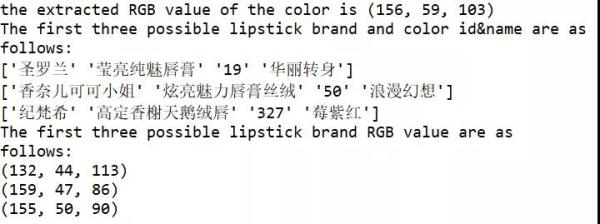
誤差分析
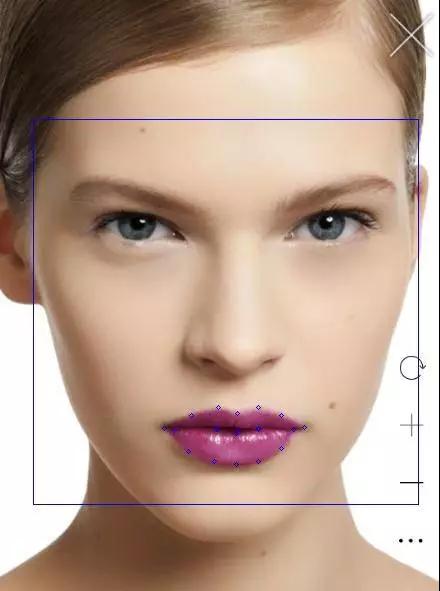
對于我們測試的圖片信息,標記了嘴唇區域的特征點,我們提取到的 RGB 值(156,59,103)顏色如下所示:

可以看到和圖片的顏色已經十分接近了,而數據集合 lipstick.json 中這種口紅存儲的 16 進制顏色值為 #842C71,對應的顏色如下:

明顯看到數據集存儲的顏色和實際照片的顏色是有些許誤差的,而在本文算法實現過程中,又不可避免的有以下誤差:
嘴唇區域截取不可避免會截取到皮膚中的一部分顏色,雖然算法已經將那種可能降到最低。
顏色提取上,雖然截取多個嘴唇圖片求平均值,但是本身的提取算法還是和實際值稍有偏差。
RGB 顏色相似度比對的算法也不夠精確。
最最重要的是,照片必須是原圖,而且光線要自然,加了濾鏡的圖是怎么也不可能識別出來的。
以上種種,使得讓計算機快速高效地識別不同的口紅色號還是有困難的,原來計算機有時候也會很直男。
實時人像口紅色號預測
看到這兒,可能很多讀者朋友想實時地試一下能不能讓計算機判斷自己的口紅色號,這對于 OpenCV 這一強大的圖形操作庫來說,不是什么問題。
它可以打開你的攝像頭,讀取每一幀的圖片,結合前文提到的人臉識別代碼,可以實時地截取到嘴唇區域的圖片,然后交給計算機預測,從此再也不怕女朋友的靈魂拷問!
最后,附上打開攝像頭的代碼,快叫女朋友過來試下吧!
#coding=utf8 import cv2 import time print('Press Esc to exit') imgWindow = cv2.namedWindow('FaceDetect', cv2.WINDOW_NORMAL) import sys import os import dlib import glob import numpy from skimage import io def detect_face(): capInput = cv2.VideoCapture(0) #nextCaptureTime = time.time() faces = [] feas = [] if not capInput.isOpened(): print('Capture failed because of camera') while 1: ret, img = capInput.read() gray = cv2.cvtColor(img, cv2.COLOR_BGR2GRAY) gray = cv2.equalizeHist(gray) time=0 eTime = time.time() + 0.1 detector = dlib.get_frontal_face_detector() predictor = dlib.shape_predictor('shape_predictor_68_face_landmarks.dat') dets = detector(gray, 1) print("Number of faces detected: {}".format(len(dets))) for a in dets: cv2.rectangle(img,(a.left(),a.top()),(a.right(),a.bottom()),(255,0,0)) for index, face in enumerate(dets): print('face {}; left {}; top {}; right {}; bottom {}'.format(index, face.left(), face.top(), face.right(), face.bottom())) shape = predictor(gray, face) for i, pt in enumerate(shape.parts()): #print('Part {}: {}'.format(i, pt)) pt_pos = (pt.x, pt.y) cv2.circle(img, pt_pos, 2, (255, 0, 0), 1) cv2.imshow('FaceDetect',img) if cv2.waitKey(1) & 0xFF == 27: break capInput.release() cv2.destroyAllWindows() if __name__ == "__main__": detect_face()到此,關于“怎么用github寫個口紅色號識別器”的學習就結束了,希望能夠解決大家的疑惑。理論與實踐的搭配能更好的幫助大家學習,快去試試吧!若想繼續學習更多相關知識,請繼續關注億速云網站,小編會繼續努力為大家帶來更多實用的文章!
免責聲明:本站發布的內容(圖片、視頻和文字)以原創、轉載和分享為主,文章觀點不代表本網站立場,如果涉及侵權請聯系站長郵箱:is@yisu.com進行舉報,并提供相關證據,一經查實,將立刻刪除涉嫌侵權內容。